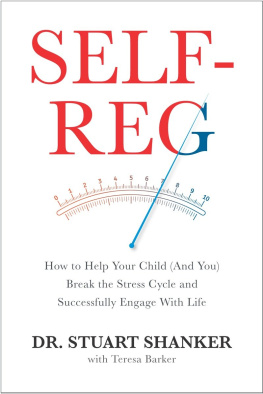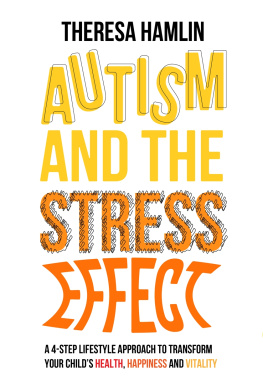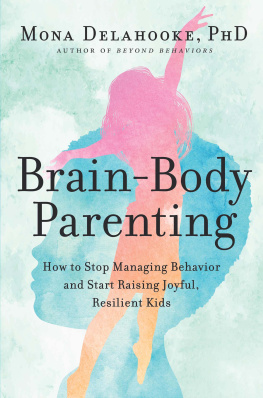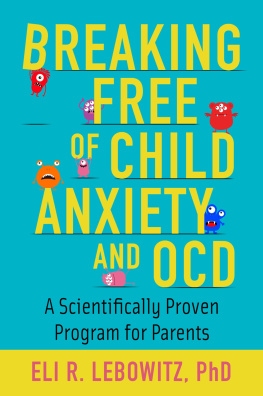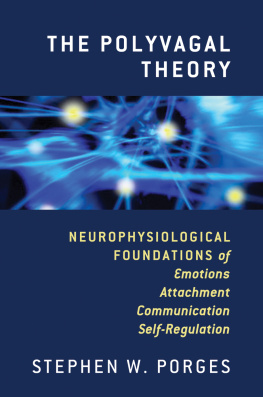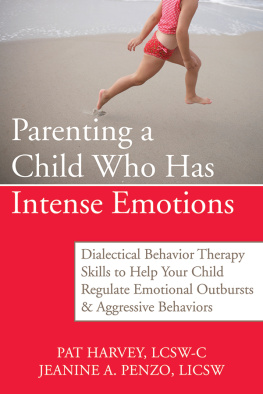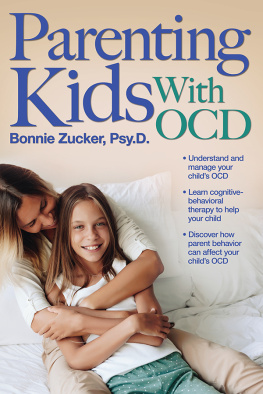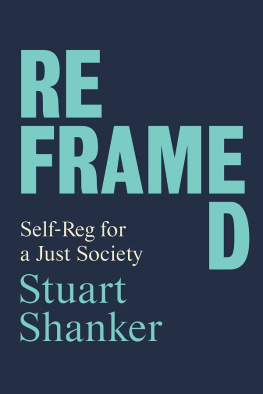Copyright 2016 by V. and S. Corp., Inc.
Penguin supports copyright. Copyright fuels creativity, encourages diverse voices, promotes free speech, and creates a vibrant culture. Thank you for buying an authorized edition of this book and for complying with copyright laws by not reproducing, scanning, or distributing any part of it in any form without permission. You are supporting writers and allowing Penguin to continue to publish books for every reader.
Introduction
I ve lost track of how many children Ive seen in my work across Canada, the United States, and the world. Not just thousands but easily tens of thousands. And among all those children I have never seen a bad kid.
Kids can be selfish, insensitive, and even spiteful; refuse to pay attention; be quick to shout or push; or be disobedient or downright hostile. The list goes on and on. I knowIm a father myself. But a bad kid? Never.
We all have moments when we immediately label children bad. We might say unmanageable or impossible or the problem kid or use a clinical label like ADHD/ADD or oppositional defiant, but no matter what words we use, our conclusions can be harshly judgmental.
One day I bumped into a neighbor walking down the street with his four-year-old son and the family dog. When I leaned down to pat the dog, it snapped at me, and the father smiled ruefully and said apologetically, Alfonse is just a puppy, but the little boy stopped to scold the dog and slapped it on the nose. The father exploded. It was okay for the dog to act up but not his four-year-old son. Weve all been that dad at one time or another, reacting to our kids in the pressure of a moment in ways we wouldnt if we were thinking more calmly and clearly.
These behaviors are expressions of a childs inability in the moment to respond to everything going on in and around himsounds, noise, distractions, discomforts, emotions. Yet we react as if these were problems with a childs character or temperament. Worse yet, children come to believe it.
There isnt a single child who, with understanding and patience, cant be guided along a trajectory that leads to a rich and meaningful life. But stereotypes of the difficult child color our views, as do our own hopes, dreams, frustrations, and fears as parents. Dont get me wrong: Some children can be a lot more challenging than others. But often our negative judgments of a child are just a defense mechanism, a way of shifting the blame for the trouble were having onto the childs nature. This can make a child more reactive, defensive, defiant, anxious, or withdrawn. But it doesnt have to be that way. It never has to be that way.
I once shared this thought with a conference audience of two thousand kindergarten teachers, and a voice piped up from the back: Well, Ive got a bad kid. And his dad was a bad guy. And his grandfather before him was bad to the core. Everyone laughed, but I was intrigued. I thought, Well, theres always an exception to the rule. I really want to meet this child. So the teacher arranged for me to come to the school and meet the little boy in question. And the second he shuffled into the room it was instantly clear that what she saw as misbehavior was really stress behavior.
He was sensitive to noise; twice, before hed even sat down, he had been startled by sounds in the hall outside the room. Whats more, he was squinting, which suggested that he was sensitive to the fluorescent lights in the room or perhaps had a visual-processing problem. The way he squirmed in his chair made me wonder if it was difficult for him to sit upright or feel at ease on the hard plastic chair. The real problem was something biological. Under these circumstances, raised voices or hardened facial expressions would only make him more distressed and distracted. Over time, this kind of habitual interaction can make a child disobedient or defiant.
This is especially true with issues that run in families, as it seemed was the case here. Did his father and his grandfather before him have the same biological sensitivities? Had they met with the sort of punitive responses from the adults in their lives that can so easily set a child on a troubled path that eventually seems only to confirm the thinking You see, I told you he was a bad kid?
My immediate concern was for the child in front of me, and to help the weary teacher see and understand the significance of his behavioral cues. I gently closed the classroom door, turned off the overhead lights (which not only have a harsh glare but also make a constant buzzing noise), and lowered my voice. She saw him suddenly relax, her expression softened, and she whispered, Oh my God.
Its a response Ive seen and heard from every adult who has discovered that a childs problem wasnt irreparable. It had been so easy to see this boy as having a genetically flawed character. That changed the instant she saw his sensitivity to sound and light. This wasnt his choice.
In a flash the teachers entire behavior toward him changed. Before she had been grim; now she smiled to the corners of her eyes. Her tone of voice changed from clipped to melodic, her gestures from choppy to slow and rhythmic. She was looking directly at him, not at me. The two of them had connected, and everything about his body posture, facial expression, and tone of voice mirrored the changes in her own.
This sort of transformation isnt just a case of seeing the child differently or, for that matter, seeing a different child, but of changing the whole teacher-child dynamic. She had put aside her need for compliance, even her ego, if you will, and had seen the childtruly seen the childfor the first time. She now could begin to teach him; for his part, he hadnt the first clue that he was so sensitive to noise and light, let alone that this made him difficult to handle. This was his reality, what was normal for him. Now she could help him learn when and why he was becoming hyper and distracted and what he could do about it to stay calmly focused, alert, and engaged in his own learning.
Looking from the Right Spot
There isnt a parent reading this book who hasnt, at some time in their childs life, been in exactly the same place. Probably more than once! We try so hard to help our children, to provide them not just with material comforts but with the life skills they will need to be successful. Yet all too often we find ourselves failing to connect and understandably frustrated or angry. We know that what they are doing isnt working well for them or isnt good for them, and we wonder why we cant get them to see it. Just like this teacher, we have the best of intentions, but thats not enough. Self-Reg starts by reframing a childs behavior and, for that matter, our own. It means seeingthe meaning of the childs behavior, maybe for the first time.
W hen I was in graduate school, my supervisor, Peter Hacker, an amateur Rembrandt scholar, once offered to show me around a Rembrandt exhibition. Arriving early at the gallery, I spent twenty minutes alone studying a self-portrait, and for the life of me I couldnt see what all the fuss was about. When Peter arrived, he asked me what I thought, and I said it just looked blurry to me. Peter smiled and walked away from the painting, staring intently at the floor. He pointed to a small dot on the floor and then asked me to stand on that spot and look at the picture again. What I saw was astonishing. The painting had suddenly sprung into perfect focus. Instantly I saw and felt the full force of Rembrandts genius.

